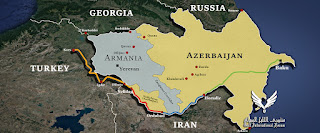As India prepares to hold assembly elections in the disputed
territory of Jammu and Kashmir (J&K), a cloud of skepticism and dissent
hovers over the region. For many Kashmiris and their leaders, these elections
represent not a democratic exercise but a cynical attempt to legitimize India’s
occupation and control over the region.
The announcement of the elections has been met with sharp
criticism from prominent Kashmiri leaders such as Altaf Hussain Wani and Abdul
Hameed Lone, who have denounced the move as a desperate ploy to deceive both
the international community and the local population.
Since the abrogation of Articles 370 and 35A in August 2019,
Jammu and Kashmir has undergone a dramatic and controversial transformation.
Once a state with special autonomous status, it was downgraded to a union
territory under direct control of the central government in New Delhi.
This move was widely condemned by Kashmiris and has been
perceived as an assault on the region’s unique cultural, political, and
religious identity. The central government’s subsequent actions, including
changes to domicile laws and the intensification of military presence, have
only deepened the sense of alienation and resentment among the local
population.
In this context, the upcoming elections are viewed by many
as an attempt to present a veneer of normalcy in a region that remains deeply
troubled.
The Indian government’s narrative is one of democratic
engagement and development, but this is a narrative that rings hollow for those
who live under the constant shadow of militarization and political repression.
The skepticism surrounding the elections is not without
reason. Historically, elections in Jammu and Kashmir have been marred by low
voter turnout, allegations of rigging, and widespread disenchantment with the
political process.
For many Kashmiris, the electoral process is seen as a tool
used by the Indian state to project an image of legitimacy while the underlying
issues of self-determination and human rights remain unaddressed.
Leaders like Altaf Hussain Wani have been vocal in their
criticism, labeling the upcoming elections as a “drama” designed to create a
false impression of normalcy.
Wani’s assertion that these elections are nothing but a sham
reflects the broader sentiment among Kashmiris who feel that their voices are
being silenced and their aspirations ignored.
The elections, in their view, do not represent a genuine
opportunity for democratic expression but rather a strategic maneuver by the
Indian government to consolidate its control over the region.
The Indian government’s portrayal of the elections as a step
towards restoring normalcy and democracy in Jammu and Kashmir is met with
widespread skepticism.
While the central government insists that the elections are
a democratic exercise, the reality on the ground tells a different story.
The ongoing militarization, the curtailment of civil
liberties, and the lack of meaningful political engagement with local leaders
have created an environment where true democratic expression is impossible.
For many Kashmiris, the elections are a façade—an attempt by
the Indian state to project an image of stability and legitimacy to the outside
world while continuing to suppress the region’s demand for self-determination.
The electoral process, rather than addressing the root
causes of the conflict, serves to entrench the status quo and perpetuate the
cycle of violence and repression.
The upcoming elections in Jammu and Kashmir may proceed as
planned, but their legitimacy and effectiveness are in serious doubt. For the
elections to be meaningful, they must be more than just a box-ticking exercise.
These must be accompanied by a genuine commitment to
addressing the aspirations of the Kashmiri people, including their right to
self-determination as enshrined in United Nations Security Council resolutions.
A comprehensive approach to resolving the Kashmir issue is
needed—one that goes beyond electoral politics and addresses the fundamental
grievances of the people.
This includes the demilitarization of the region, the
restoration of civil liberties, and meaningful dialogue with all stakeholders,
including those who have been marginalized or excluded from the political
process.
Ultimately, the future of Jammu and Kashmir cannot be
decided through elections alone. It requires a concerted effort to heal the
wounds of the past, respect the rights and aspirations of the Kashmiri people,
and work towards a peaceful and just resolution of the conflict. Only then can
the promise of democracy be truly realized in this troubled region
Courtesy: South Asia Journal






